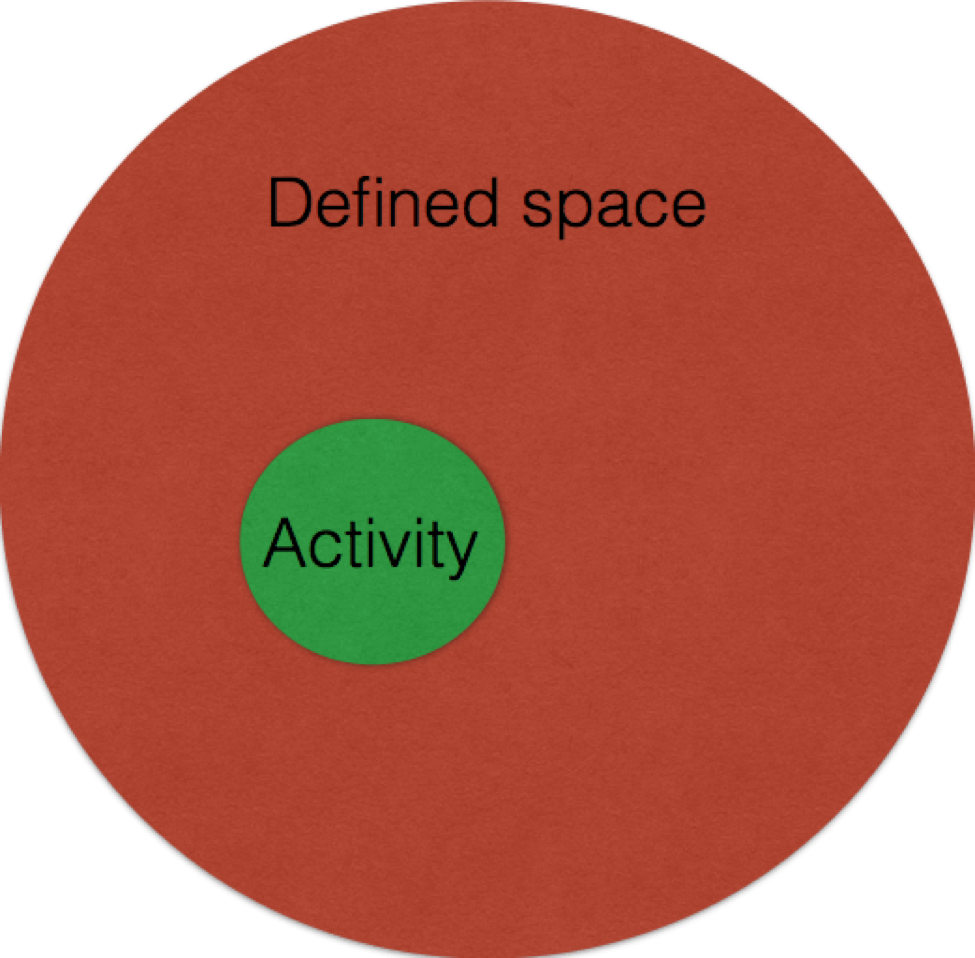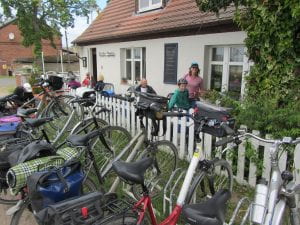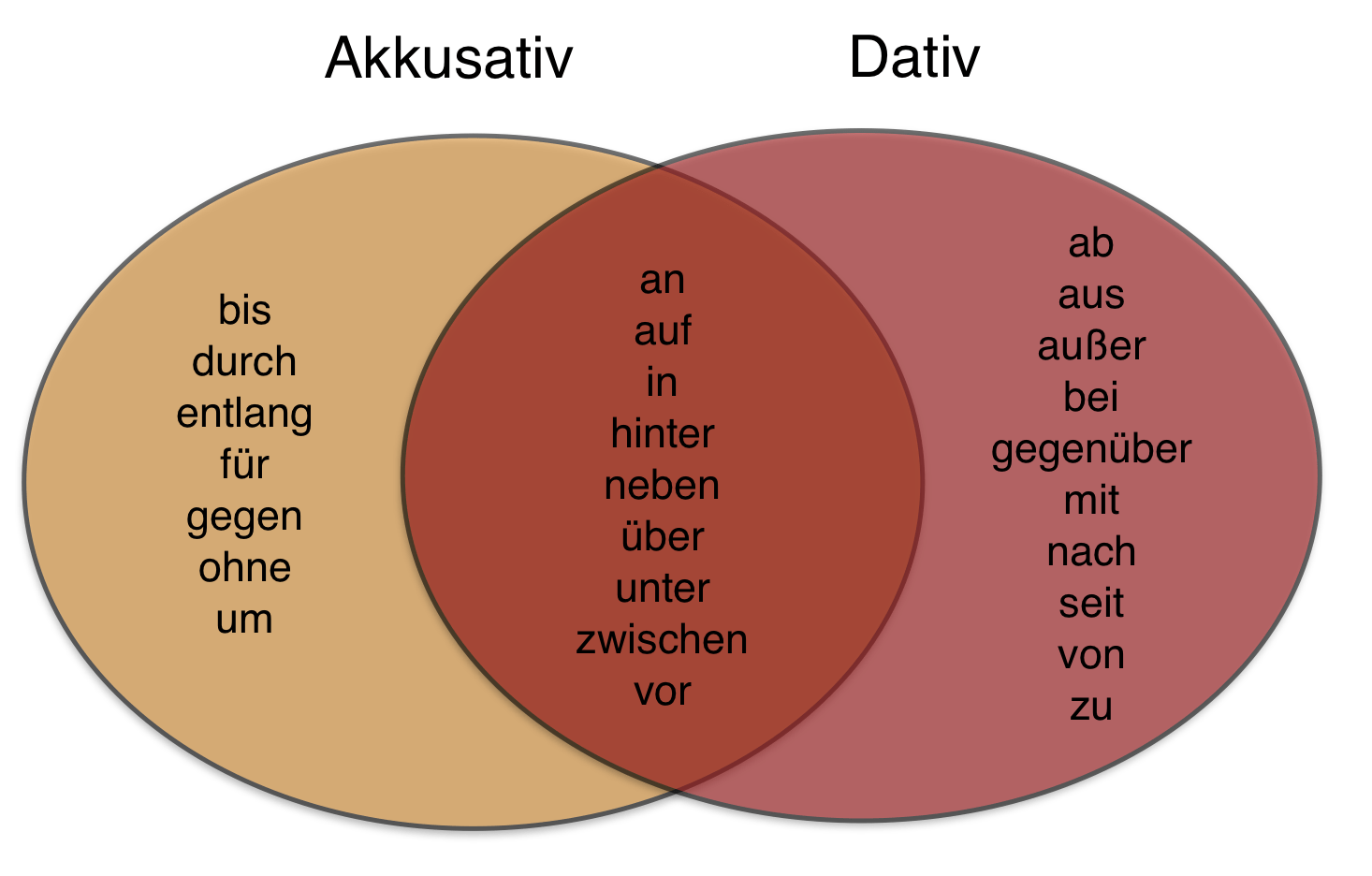Prepositions
Page written by Jana Kühn and updated in August 2022; to be updated again soon with more examples and quizzes
A preposition is used with a noun and describes the noun’s relationship to another element in a sentence or clause. This relationship can describe location, direction or time. Prepositions are important little words that add essential details, but they can be hard to master as languages use their prepositions in different ways.
For example, German uses the preposition “mit” to express which type of transport somebody is using. In English, this is expressed using the preposition “by”.
Another example is the preposition “to”. German uses three different prepositions, “nach”, “in” and “zu”.
These examples illustrate that prepositions should be learned with examples of their use in different contexts.
An added difficulty in German is the fact that prepositions are used with different cases. Some are used with one case only.
Akkusativ-Präpositionen
| bis – until; durch – through; für – for; entlang – along; gegen – agains; ohne – without; um – at/around |
Dativ-Präpositionen
| aus – from/out of; außer – except for/besides; bei – at/near; gegenüber – across/opposite; mit – with/by; nach – to/after; seit – since (time)/for; von – by/from; zu – to/at |
Other prepositions are used with different cases depending on the relationship they are describing. These are called “Wechselpräpositionen” (changing prepositions). See the picture below for the different groups of prepositions. There are also prepositions that require the genitive case but they are not discussed here.
Click on the picture to enlarge it.
Wechselpräpositionen
| Akkusativ | Dativ |
|---|---|
 |
 |
| If the sentence expresses movement from one place to another the preposition is used with the Accusative case. Usually the verbs used in this context already express movement (gehen, fahren, fliegen, setzen, stellen, legen). | If the sentence expresses that an activity is completed within a defined space the preposition is used with the Dative case. |
| Masculine: Wir gehen in den Park. | Masculine: Wir spielen im Park Fußball. |
| Feminine: Heute fahre ich in die Stadt. | Feminine: Was wollen wir in der Stadt machen? |
| Neuter: Die Kinder laufen hinter das Haus. | Neuter: Die Kinder warten hinter dem Haus. |
| Plural: Legt die Bücher unter die Tische. | Plural: Die Bücher liegen unter den Tischen. |
To practise using prepositions go to the page:
In der Touristeninformation

Kahoot: Practising Dative Prepositions
A relatively straightforward Kahoot concentrating only on the dative prepositions

Kahoot: Practising the Changing Prepositions
This is a much more challenging Kahoot, with questions based on the changing prepositions or Wechselpräpositionen.






Ein tolles Diagramm, sehr nützlich.